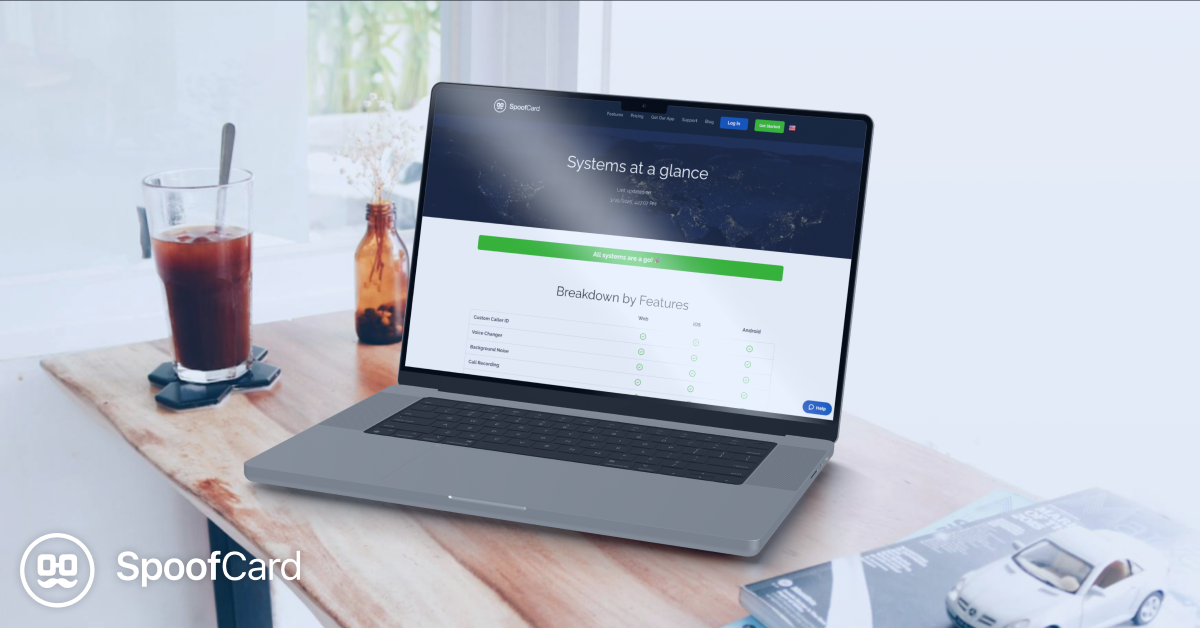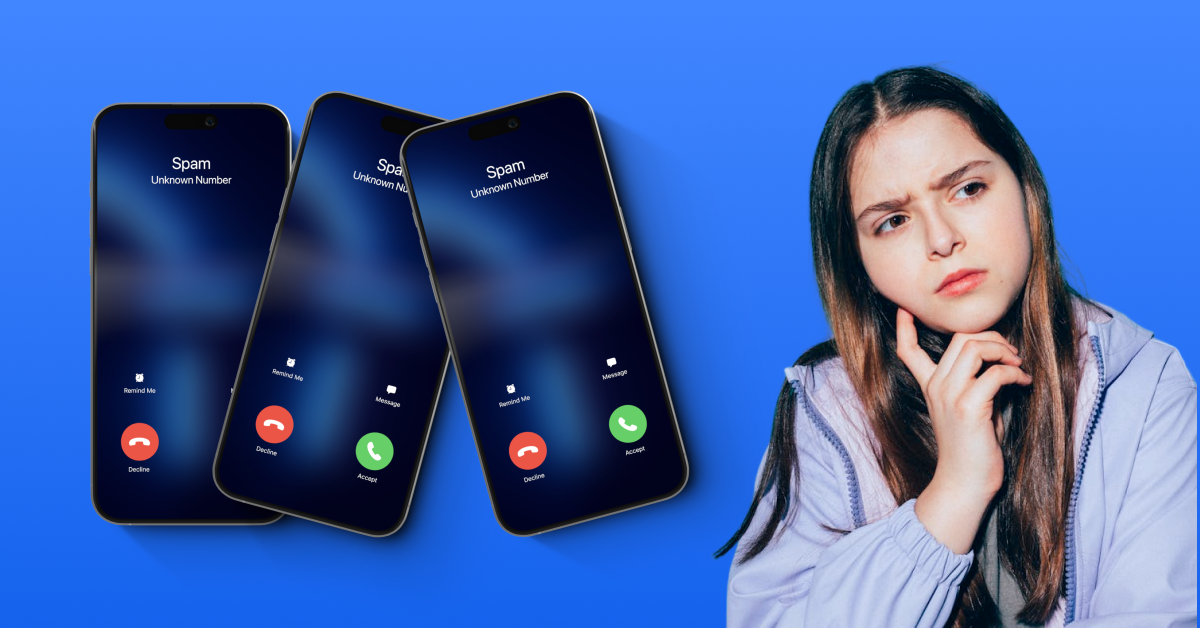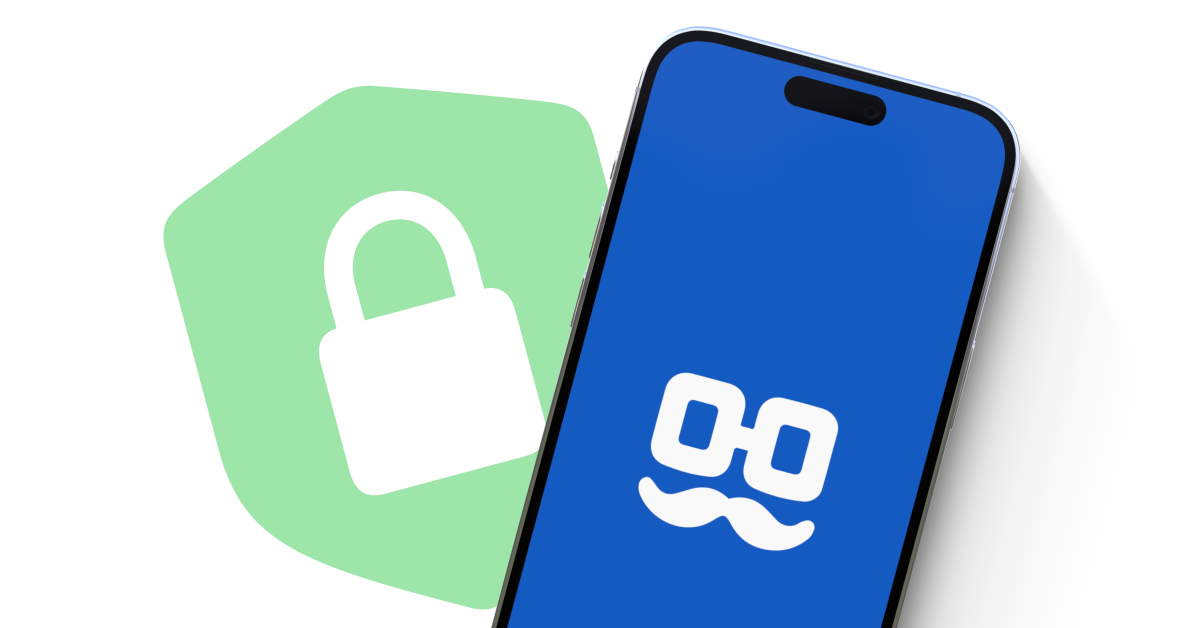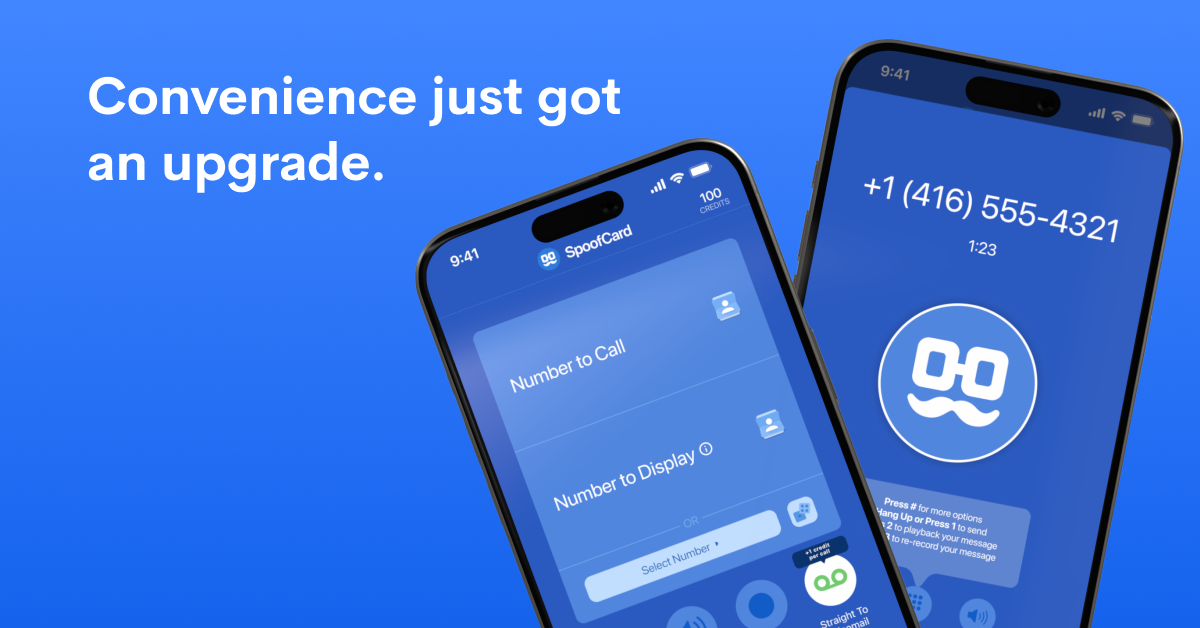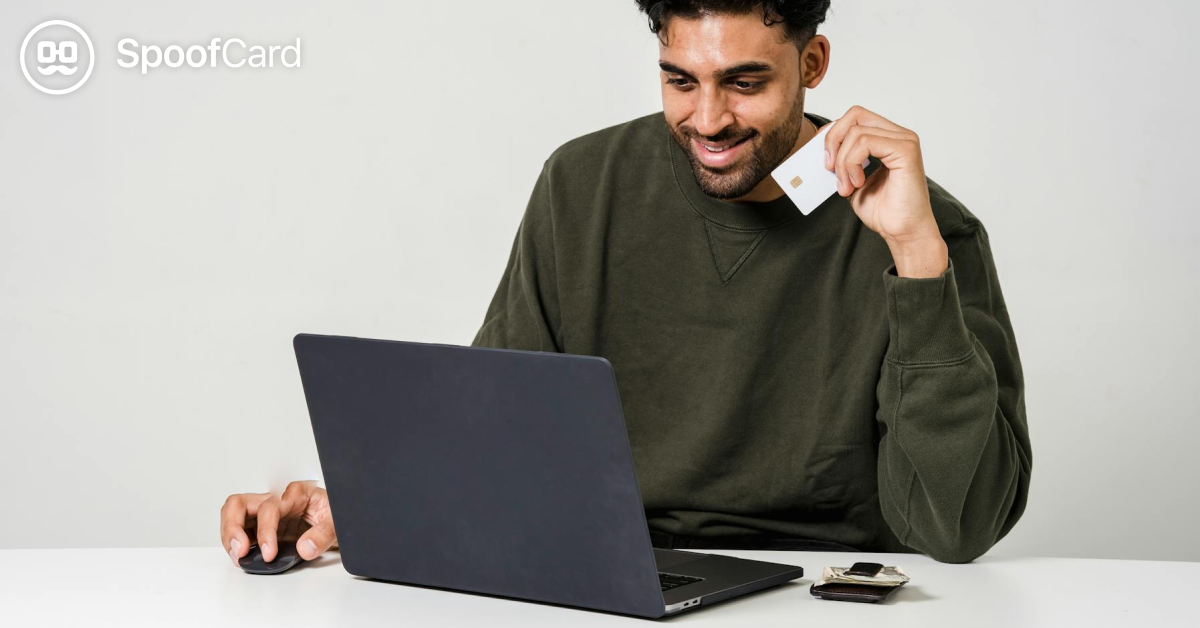Caller ID Spoofing 101: The Definitive Guide to Call & Text Spoofing

Have you ever needed to send a call or a text, but preferred not to share your caller ID with the recipient? Caller ID spoofing can help you.
Caller ID spoofing is a technology that allows you to send and receive phone calls or text messages from a caller ID that is different from your own. Caller ID spoofing services such as SpoofCard protect your caller ID when communicating with your smartphone, and give you the power to communicate anonymously when you otherwise could not.
However, the technology that helps those looking for privacy and protection is also sometimes used by spammers and other bad actors. As a result, caller ID spoofing has received a bad reputation.
What Is Caller ID Spoofing?
Caller ID spoofing is the technology that allows you to alter the information forwarded to your caller ID in order to hide the true origin ID of the phone call. In simpler terms, caller ID spoofing allows you to display a phone number different than the actual number from which the call was placed. Caller ID spoofing technology works for both phone calls and text messages on your smartphone. Users can place calls from any caller ID they wish to display and can send and receive outgoing or incoming spoofed phone calls or texts from a phone number of their choosing or show their caller ID as “Unknown.”
The primary benefit of phone spoofing is the ability to stay anonymous so that you can get more accomplished and say what you need to when you otherwise might not be able or want to.
How Does Caller ID Spoofing Work?
Caller ID spoofing works in a few ways, the most popular being through VoIP (Voice-over-Internet-Protocol) technology.
VoIP is the technology that allows for voice communications to be sent over an Internet connection rather than through a phone line or cell tower. Some VoIP providers allow users to configure the number they display as the caller ID through the configuration page on their website.
In spoofing services which use VoIP, the process goes as follows:
- The user opens the application (web or mobile) of the spoofing provider.
- They enter the number they wish to call, followed by the number they wish to display.
- When they press “send” or “call,” the call is sent through a VoIP service.
- The outbound caller ID is changed and the call is connected to the desired destination phone number.
How to Spoof Your Caller ID for Free
Using SpoofCard, you can spoof your caller ID for free on the SpoofCard website. To spoof your caller ID for free, follow the below steps:
It’s that simple!
After you’ve created your free account, you can use SpoofCard to make a call or send a text. Once you’ve used up your free credits, SpoofCard offers affordable credit-based plans to continue your spoofed calling.
How to Send a Spoofed Phone Call
The easiest way to spoof your caller ID is with the SpoofCard app. SpoofCard allows you to easily spoof your caller ID for outgoing phone calls and text messages right on your smartphone. SpoofCard is just like having an unlimited amount of burner phone numbers right on your own smartphone!
To spoof your caller ID when placing a phone call on your smartphone, follow these simple steps:
- Open the SpoofCard app
- Select “Make a Call” on the navigation bar
- Enter the phone number to call under “Number to Call”
- Enter the caller ID you wish to display under “Caller ID to display”
- Select voice changing, call recording, background noise, or straight to voicemail
- Select “Call” to place your spoofed call
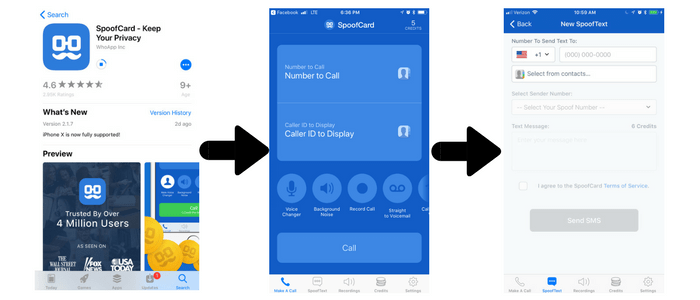
How to Send a Spoofed Text Message
SpoofCard allows you to spoof your text messages just like you can spoof your phone calls. With SpoofCard, you can anonymously make it seem like you texted from a totally different number. The person you are texting will never know!
All text message conversations remain within the SpoofCard app and function just like iMessage or Android texting. Best of all, you will see the replies and be able to continue the conversation through your spoofed phone number.
Follow these simple steps to send a spoofed text message:
- Open the SpoofCard App
- Select “SpoofText” on the navigation bar
- Select “New SpoofText”
- Enter the phone number to send the text to, or select from your contacts
- Select the phone number you’d like to display as your Caller ID
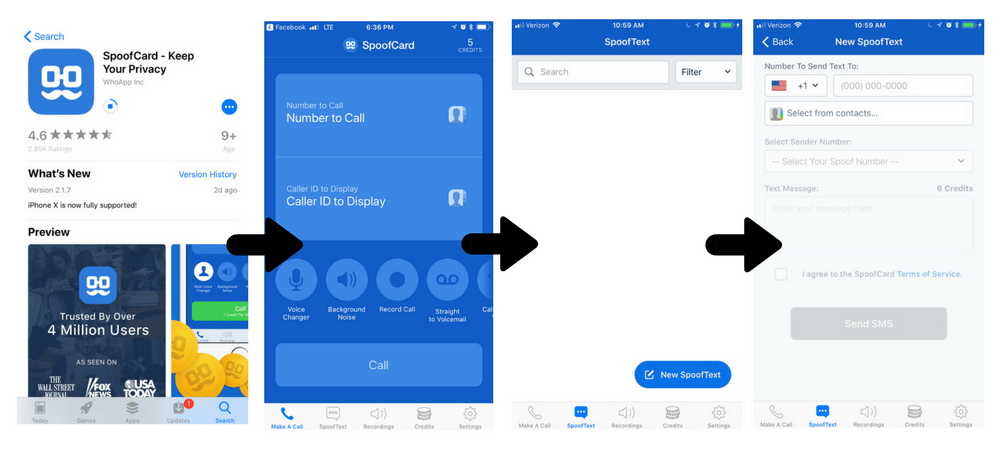
Is Caller ID Spoofing Legal?
The short answer is yes, caller ID spoofing is legal, unless the spoofed call or text is sent with the intention to cause harm in some form. If no harm is intended or caused, spoofing is legal.
In the United States, “Under the Truth in Calling Act,” FCC rules prohibit any person or entity from transmitting misleading or inaccurate caller ID information with the intent to defraud, cause harm, or wrongfully obtain anything of value.
Anyone who is illegally spoofing can face penalties of up to $10,000 for each violation. In some cases, spoofing can be permitted by courts for people who have legitimate reasons to hide their information, such as law enforcement agencies working on cases, victims of domestic abuse or doctors who wish to discuss private medical matters.
The details regarding the legality and legitimacy of caller ID spoofing are not very well known, thanks to the scammers and telemarketers that use neighbor spoofing for their phone scams.
Due to the recent publicity of the FCC’s decision to allow phone service carriers to block caller ID spoofed calls, the stigma around caller ID spoofing is that
all forms
are harmful and illegal. As outlined above, this is simply not the case.
Can Caller ID Spoofing Be Traced?
In most cases, caller ID spoofing cannot be traced. Only in extreme circumstances can law enforcement agencies trace the origin of the spoofed phone call. This is done by using technology to determine what service was used to carry out the spoofing and subpoena that service to provide information and call records on the person in question.
If you are looking to place a spoofed phone call or text message, it is unlikely that your spoofed caller ID will be traced back to your real phone number –
unless
you are spoofing your phone number with the intent to cause harm or damage.
Why Are Some Forms of Caller ID Spoofing Harmful?
Despite the long list of ethical benefits caller ID spoofing provides, the unfortunate reality is that it is also used by bad actors and scam artists.
Scammers employ a tactic called “neighbor spoofing” as their strategy to send harmful phone scams to unsuspecting victims, with the intent to steal their money or personal identity. Neighbor spoofing works by tricking recipients into thinking they are receiving a legitimate phone call by showing caller ID that matches or is close to your phone number’s NPA-NXX. By matching their NPA-NXX closely to yours, spammers try to trick people into thinking the call is coming from a legitimate phone number because it looks as though it’s coming from a phone number in your area code. This makes you far more likely to answer the phone and potentially fall for their elaborate phone scam.
It is important to note, however, that though it is true caller ID spoofing has been used as a vehicle for scammers to complete their phone scams, is not entirely to blame for the growing epidemic of robocalls and phone scams. Like many tools or products that have been used to cause damage or harm to others, the people behind the phone scams are the root cause of the spam call epidemic.
Though caller ID spoofing services such as SpoofCard have put intense measures in place to ensure their services do not fall into the wrong hands, phone scammers who are technologically adept can spoof their caller ID without using a service, as they have figured out ways to do it on their own. To truly stop harmful caller ID spoofing, we must address the root cause of the problem: the scammers behind the phone calls.
The Benefits & Common Uses of Caller ID Spoofing
Now that we’ve gotten past the elephant in the room, we can address the benefits and numerous uses that legal caller ID spoofing provides to individuals and professionals worldwide.
The primary benefit caller ID spoofing provides is that it allows its users to maintain their anonymity while communicating over the phone – ultimately to protect one’s own privacy. Below are a few real-world examples of how caller ID spoofing can provide value to its users.
Doctors and veterinarians. Doctors and veterinarians value their privacy and prefer that their patients don’t have their personal contact information, for understandable reasons. Due to those reasons, spoofing services are greatly valued to these people, who can still call patients from their personal cell phones or landlines after hours, all while displaying the caller ID information of their office. In addition, the call recording features found on spoofing applications, such as SpoofCard, are used to record conversations for notes and further analysis.
Law enforcement officials and private investigators. Professionals who are tasked with finding suspects, persons of interest, or missing persons, frequently use caller ID spoofing to locate these people. Call spoofing can be used by professionals in order to appear as though they are calling these people from the numbers of their friends and family – it’s easy to ignore a call from an unknown caller ID, but anyone will answer a call from their mother or their best friend. And when they answer those calls, separate services provide their location. In these instances, caller ID spoofing makes the job of an investigator much easier.
Secret shoppers. For most mystery shoppers, one of their primary tasks is to conduct call center evaluations. This involves calling the customer support branch of a company with a particular set of questions and evaluating the expertise of the customer support representatives. These calls are generally recorded and call recording is a feature found in a number of call spoofing applications, namely, SpoofCard. Mystery shoppers can’t make these calls using their actual number, so they use call spoofing applications to hide their number and to record the call to be sent to their superiors for evaluation.
Personal Relationship Conflict Management. In a more personal example, caller ID spoofing can be used to manage relationship conflicts. Caller ID spoofing is a great tool to get people you need to speak to, to answer their phone calls or text messages when they otherwise might not. By changing your caller ID, you can speak to loved ones or friends who might be avoiding you or have even blocked your phone number. With caller ID spoofing, you can finally say what you need to – without the worry of your caller ID interfering.
To summarize, the reality is that many times legal caller ID spoofing provides a great deal of value for those looking to use caller ID spoofing for the right reasons. Spoofing allows you to take full control over your caller ID so that you can get more accomplished, and it allows you to say what you need to when you otherwise could not.
SpoofCard: The #1 Rated App for Caller ID Spoofing
If you are looking for the best app to place spoofed calls and texts, look no further than SpoofCard. SpoofCard has helped over five million users protect their caller id and stay anonymous over the phone. With a 4.6 star rating and over 17,000 reviews, Spoofcard is the #1 rated service to send and receive spoofed calls and texts on Apple, Android, and your computer. Start protecting your phone number today!
